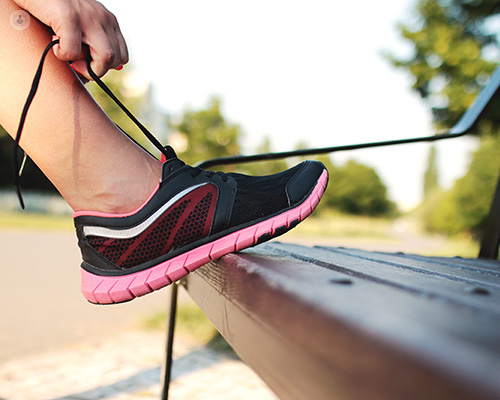

What is chondromalacia?
Chondromalacia, also known as runner’s knee, refers to a condition where the surface of the cartilage on the undersurface of the kneecap (the patella) deteriorates over time. Runner’s knee is common among young adults, especially those who practice certain sports that have a great impact on the knees such as basketball, volleyball, football, cycling, tennis, ballet dancing and running.

What are the symptoms?
Runner’s knee typically presents through pain felt in the area around your knee. When bending or extending, you may also notice a grinding or cracking sensation in the knee. The pain may worsen during exercise or after much strain has been put on the legs (e.g after standing for long periods of time). Pain may also get worse after sitting for extended periods of time.
What causes runner’s knee?
The causes of runner’s knee vary but the condition can be the result of an injury to the patella, or a result of friction between the patella and the femoral joint when moving the knee. Abnormal rubbing can be caused by:
- Trauma to the kneecap
- Repeated movements or repeated stress being placed on the knee joints
- Weak hamstrings and quadriceps
- Certain congenital conditions which result in poor alignment of the joints
Age, gender, and previous injury to the kneecap are all factors which increase the risk of developing runner’s knee. Women are much more likely than men to develop the condition, and young adults are also at a higher risk, thanks to rapid growth spurts which can cause muscle imbalances.
Can it be prevented?
The risk of developing runner’s knee can be lessened by taking certain measures such as wearing kneepads while playing sport to support the joints and muscles. If you have flat feet, shoe inserts can be used, which help to correct the arch in the feet and decrease the pressure placed on the knees.
Being overweight may also be a risk factor, and maintaining a healthy body weight helps to reduce stress and pressure on the joints, thus decreasing the risk of runner’s knee and other stress-related conditions developing.
What is the treatment?
The choice of treatment will depend on the cause of the injury. Treatment is designed to reduce pressure on the kneecap and on the joint, and the damage caused may indeed repair itself with rest. Physical therapy may also be prescribed, which can help to improve muscle strength and restore balance. If there is pain and tenderness in and around the joint, your doctor may prescribe anti-inflammatories to help reduce the pain and swelling.
Common treatment of runner’s knee makes use of the R.I.C.E method (rest, icing, compression, elevation) at first to deal with the initial symptoms, then moving on to other treatment options such as physical therapy, patellar braces, shoe inserts, or taping around the patellar if rest and therapeutic exercise does not resolve the problem.
Most cases can be treated without surgery, but in very rare cases, it may be used to help restore the joint and re-align the knee.
